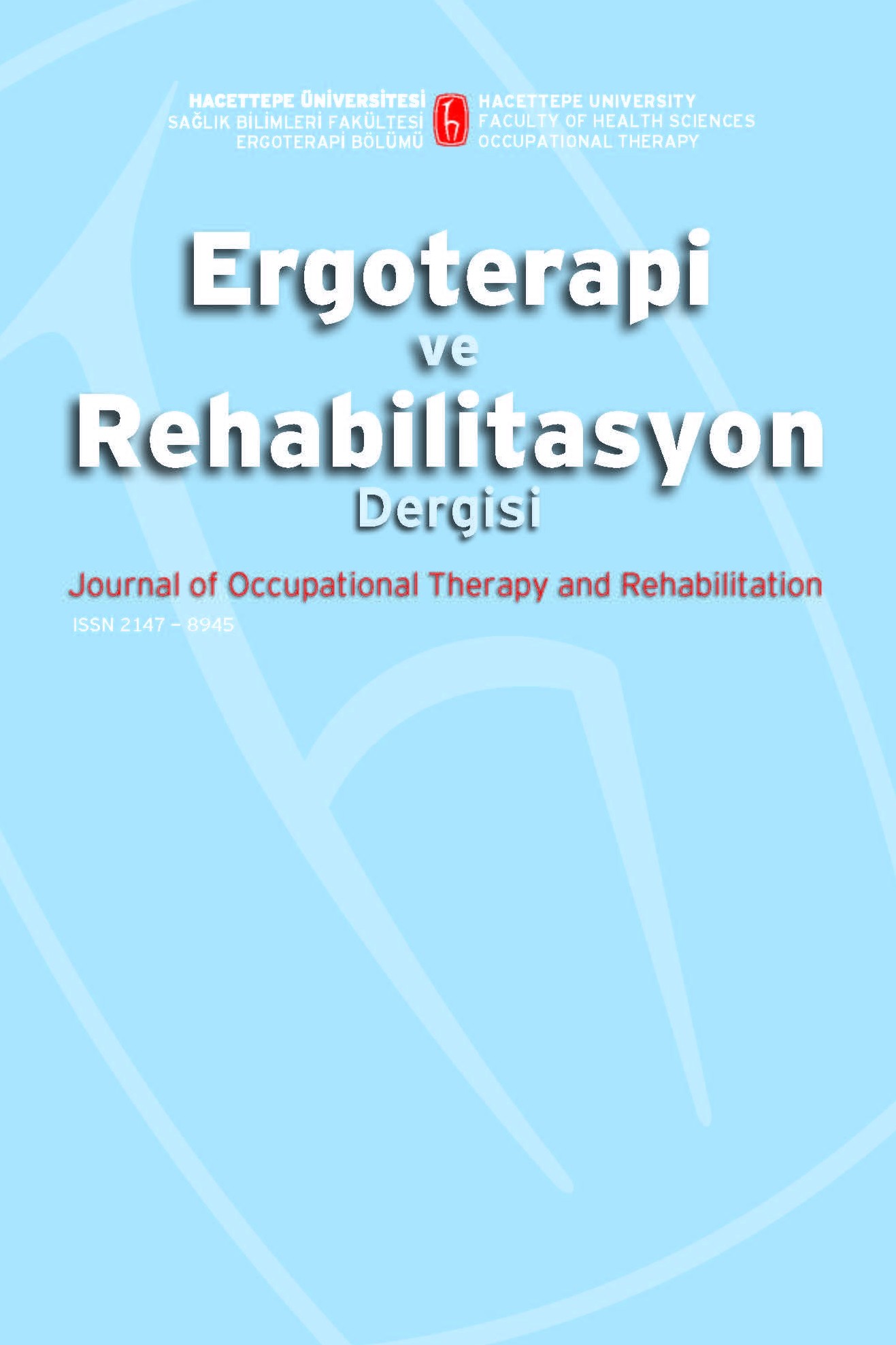Üniversite Öğrencilerinde Cep Telefonlarının Problemli Kullanımı İle Serbest Zaman Tatmini İlişkisinin İncelenmesi
Examination of The Relationship Between Problematic Use of Mobile Phones and Leisure Satisfaction in University Students
___
- Augner, C., & Hacker, G. W. (2012). Associations between problematic mobile phone use and psychological parameters in young adults. International Journal of Public Health, 57(2), 437-441.
- Barkley, J. E., Lepp, A., & Salehi-Esfahani, S. (2016). College students’ mobile telephone use is positively associated with sedentary behavior. Am J Lifestyle Med, 10(6), 437- 441.
- Beard, J. G., & Ragheb, M. G. (1980). Measuring leisure satisfaction. J Leis Res, 12(1), 20.
- Beranuy, M., Oberst, U., Carbonell, X., & Chamarro, A. (2009). Problematic Internet and mobile phone use and clinical symptoms in college students: The role of emotional intelligence. Comput Human Behav, 25(5), 1182-1187.
- Bianchi, A., & Phillips, J. G. (2005). Psychological predictors of problem mobile phone use. Cyberpsychol Behav, 8(1), 39-51.
- Coussi-Korbel, S., & Fragaszy, D. M. (1995). On the relation between social dynamics and social learning. Animal Behaviour, 50(6), 1441-1453.
- Foley, C., Holzman, C., & Wearing, S. (2007). Moving beyond conspicuous leisure consumption: Adolescent women, mobile phones and public space. Leisure Studies, 26(2), 179-192.
- Gökçe, H., & Orhan, K. (2011). Serbest zaman doyum ölçeğinin Türkçe geçerlilik güvenirlik çalışması. Spor Bilimleri Dergisi, 22(4), 139-145.
- Ha, J. H., Chin, B., Park, D. H., Ryu, S. H., & Yu, J. (2008). Characteristics of excessive cellular phone use in Korean adolescents. Cyberpsychol Behav, 11(6), 783-784.
- Janković, B., Nikolić, M., Vukonjanski, J., & Terek, E. (2016). The impact of Facebook and smart phone usage on the leisure activities and college adjustment of students in Serbia. Comput Human Behav, 55, 354-363.
- Jenaro, C., Flores, N., Gómez-Vela, M., González-Gil, F., & Caballo, C. (2007). Problematic internet and cell-phone use: Psychological, behavioral, and health correlates. Addiction research & theory, 15(3), 309-320.
- Kaya, S., & Argan, M. (2015). An Exploratory Qualitative Study on Mobile Leisure (M-Leisure): A Case of Mobile Phone Users in Turkey. Journal of Internet Applications & Management/İnternet Uygulamaları ve Yönetimi Dergisi, 6(1).
- Kim, J. H. (2018). Psychological issues and problematic use of smartphone: ADHD's moderating role in the associations among loneliness, need for social assurance, need for immediate connection, and problematic use of smartphone. Comput Human Behav, 80, 390-398.
- Kuyucu, M. (2017). Gençlerde akıllı telefon kullanımı ve akıllı telefon bağımlılığı sorunsalı: “akıllı telefon (kolik)” üniversite gençliği. Global Media Journal TR Edition, 7(14), 328-359.
- Leena, K., Tomi, L., & Arja, R. (2005). Intensity of mobile phone use and health compromising behaviors—how is information and communication technology connected to health-related lifestyle in adolescence?. Journal of Adolescence, 28(1), 35-47.
- Lepp, A. (2014a). Exploring the relationship between cell phone use and leisure: an empirical analysis and implications for management. Managing Leisure, 19(6), 381-389.
- Lepp, A. (2014b). The intersection of cell phone use and leisure: A call for research. J Leis Res, 46(2), 218-225.
- Lepp, A., Barkley, J. E., & Karpinski, A. C. (2014). The relationship between cell phone use, academic performance, anxiety, and satisfaction with life in college students. Comput Human Behav, 31, 343-350.
- Lepp, A., Barkley, J. E., Sanders, G. J., Rebold, M., & Gates, P. (2013). The relationship between cell phone use, physical and sedentary activity, and cardiorespiratory fitness in a sample of US college students. Int J Behav Nutr Phys Act, 10(1), 79.
- Lepp, A., Li, J., Barkley, J. E., & Salehi-Esfahani, S. (2015). Exploring the relationships between college students’ cell phone use, personality and leisure. Comput Human Behav, 43, 210-219.
- Lowry, R., Wechsler, H., Galuska, D. A., Fulton, J. E., & Kann, L. (2002). Television viewing and its associations with overweight, sedentary lifestyle, and insufficient consumption of fruits and vegetables among US high school students: differences by race, ethnicity, and gender. J Sch Health, 72(10), 413-421.
- Mannell, R. C. (2007). Leisure, health and well-being. World Leis J, 49(3), 114-128.
- Sánchez-Martínez, M., & Otero, A. (2009). Factors associated with cell phone use in adolescents in the community of Madrid (Spain). CyberPsychology & Behavior, 12(2), 131- 137.
- Takao, M., Takahashi, S., & Kitamura, M. (2009). Addictive personality and problematic mobile phone use. CyberPsychology & Behavior, 12(5), 501-507.
- Tekin, C., Güneş, G., & Colak, C. (2014). Adaptation of Problematic Mobile Phone Use Scale to Turkish: A Validity and Reliability Study [Cep Telefonu Problemli Kullanım (Pu) Ölçeğinin Türkçe’ye Uyarlanması: Geçerlik Ve Güvenilirlik Çalışması]. Medicine Science, 3(3).
- ISSN: 2147-8945
- Yayın Aralığı: 3
- Başlangıç: 2013
- Yayıncı: Hacettepe Üniversitesi Sağlık Bilimleri Fakültesi
Gonca BUMİN3, Gökçen AKYÜREK, Sinem KARS
Serebral Palsili Çocukların Mobilite Düzeyleri İle Toplumsal Katılım Becerileri Arasındaki İlişki
Gökçen AKYÜREK, İsa UYKUN, Gonca BUMİN
Serebral Palsili Çocukların Mobilite Düzeyleri İle Toplumsal Katılım Becerileri Arasındaki İlişkisi
Gökçen AKYÜREK, İsa UYKUN, Gonca BUMİN
